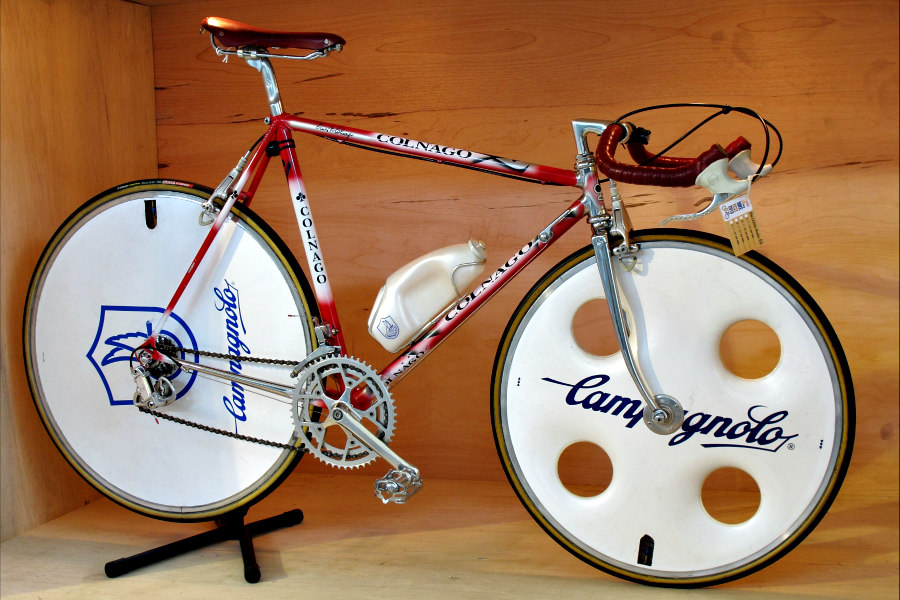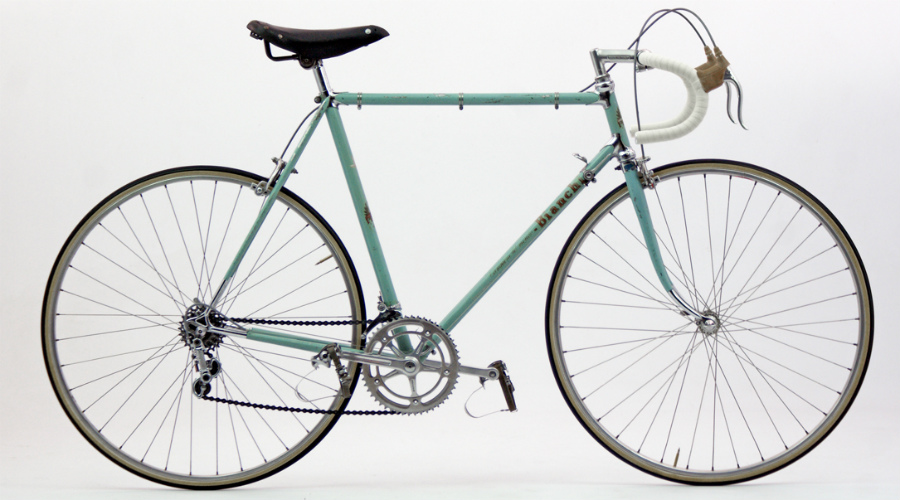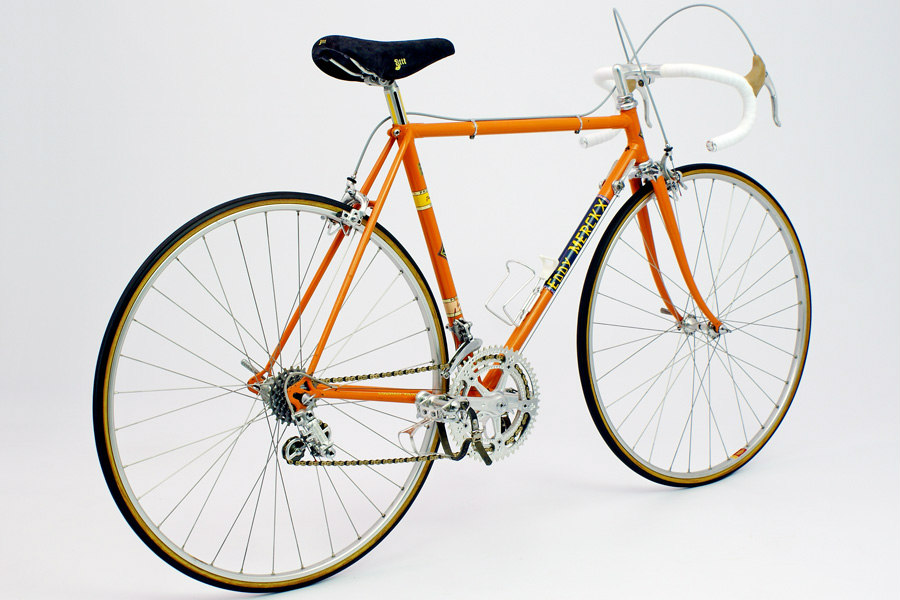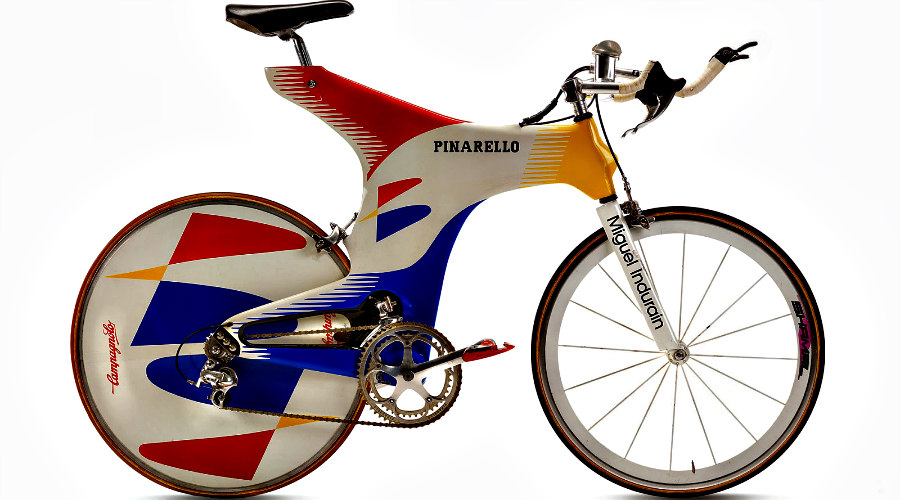
Car lovers have the Ford T or the Volkswagen Beetle. Those of motorcycles idolize the Vespa or the Harley-Davidson. Icons that go beyond fashions, with which millions of people are identified worldwide.
But ... And in cycling? What are those models that marked a before and after in the history of this sport? Is there any identified with a great cycling deed and without which it would be impossible to understand current cycling?
As in every list, there will be those who miss a specific model, or who prefers some brands on others, but what is certain is that all bicycles that make up this list deserve their own place in the cycling Olympus.
1. Fausto Coppi's bianchi
Fausto Coppi ruled cycling with iron in the decade of the 50s of the last century. His history is unrepeatable, but it is enough to say that 5 turns of Italy and 2 Tour de France, and that even no one had pointed the tour and the turn in the same year. To all this we must add your world cycling world championship.
The marriage between the Bianchi brand and the Italian lasted his entire career, not in vain he signed for the team of the same name in 1949 and would never change his bicycle model. It is hard to believe it, but then a bicycle was useful for several years and was used for all kinds of competitions.
[capt

Bianchi Campione del Mondo bicycle (image: Speedbicycles)[/caption]
If there is a significant Bianchi in the Piedmontés race, among all, it was the one with which it was crowned in 1953, in Lugano (Italy), world champion en route. Made of metal and wood, with two huge receptacles in the handlebar to house drums, had changes in the picture and looked artisanal works on the wheels, pedals or armchairs.
2. The 5.5 kilos of Eddy Merckx
As if he were aware that his name was called to appear in the history books, Eddy Merckx, with just 20 years, already assured that one of his great professional challenges was to overcome the record of the time.
Seven years after that announcement, on October 25, 1972, I succeeded at the Velodrome of Mexico City. He
Cannibal He used a colnago model with wheels of 28 radios, titanium power and steel pipe that on the scale gave 5.5 kilos.
It is not necessary to say that, in its day, this bicycle was a prodigy of the technique for its aerodynamics and its weight. Cycling fans fascinated the lightness of his painting.
The Belgian was faithful to the Italian brand, at least during his most successful professional stage, but no other models he used until his retirement was ever made so popular. It was, by the way, one of the first occasions in which the name of a cyclist in the bicycle itself was serigraph, in this case in the lower tube of the painting.
[capt

Eddy Merckx colnago bicycle (image: Speedbicycles)[/caption]
The Merckx time record was valid for 12, until it was overcome by the Italian Francesco Moser. A curiosity: if you want to see the bicycle, remain exposed at the Eddy Merckx Metro station in Brussels.
3. Greg Lemond's coupling bottle
The 1989 Tour of France will be forever the one in which Greg Lemond snatched the yellow jersey and the final victory to Laurent Fignon in the last stage.
A counterreloj and a victory that was the closest thing that in the gala round can be to a victory for a goal in the last minute of the extension or a basket on the horn.
What did the American bicycle particular, a botchia with mavic wheels (the rear, lenticular) were then novel extensions placed in the handlebar. The popular couples today helped Lemond go back the 50 seconds he needed and even get 8 more to the Gallic.
This bicycle can be seen closely at the Three Oaks Spokes Bicycle History Museum by Michigan (USA).
https://youtu.be/rWyfb3H7LEg
4. Miguel Indurain's pinelle
Pinarello is one of those manufacturers that in itself summarizes the idyll between Italy and the world of bicycle design. His models have been used by some of the most legendary cyclists since 1953.
But in the 1990s he wanted to go one step further and associate his name, forever, to the top technology applied to the world of the two wheels. He succeeded by the hand of Great Miguel Induráin, and incidentally left the forms of his creation in the retina of the countless devotees of Navarro.
Talking about Pinarello Espada is to mention the bicycle with which Induráin established a new record of the hour on September 2, 1994.

The carbon fiber of his one -piece box became as famous as his two lenticular wheels, the front smaller than the rear. Conceived by Formula 1 engineers, it barely exceeded 7 kilograms in 200 grams and was adapted to the anthropometric measures of the Navarrese cyclist.
The handlebar was from the ITM brand and the wheels were manufactured by Campagnolo. One of the curiosities about it is that its picture was manufactured from molds, and that the manufacture of each exceeded $ 5,000 in costs.
He had a subsequent version for the road with which Induráin continued to participate in the Tour. Those who want to see this piece of cycling history can do so in the Sports Museum of the Rafa Nadal Academy, in Manacor (Mallorca).
 Car lovers have the Ford T or the Volkswagen Beetle. Those of motorcycles idolize the Vespa or the Harley-Davidson. Icons that go beyond fashions, with which millions of people are identified worldwide.
But ... And in cycling? What are those models that marked a before and after in the history of this sport? Is there any identified with a great cycling deed and without which it would be impossible to understand current cycling?
As in every list, there will be those who miss a specific model, or who prefers some brands on others, but what is certain is that all bicycles that make up this list deserve their own place in the cycling Olympus.
Car lovers have the Ford T or the Volkswagen Beetle. Those of motorcycles idolize the Vespa or the Harley-Davidson. Icons that go beyond fashions, with which millions of people are identified worldwide.
But ... And in cycling? What are those models that marked a before and after in the history of this sport? Is there any identified with a great cycling deed and without which it would be impossible to understand current cycling?
As in every list, there will be those who miss a specific model, or who prefers some brands on others, but what is certain is that all bicycles that make up this list deserve their own place in the cycling Olympus.
 Bianchi Campione del Mondo bicycle (image: Speedbicycles)[/caption]
If there is a significant Bianchi in the Piedmontés race, among all, it was the one with which it was crowned in 1953, in Lugano (Italy), world champion en route. Made of metal and wood, with two huge receptacles in the handlebar to house drums, had changes in the picture and looked artisanal works on the wheels, pedals or armchairs.
Bianchi Campione del Mondo bicycle (image: Speedbicycles)[/caption]
If there is a significant Bianchi in the Piedmontés race, among all, it was the one with which it was crowned in 1953, in Lugano (Italy), world champion en route. Made of metal and wood, with two huge receptacles in the handlebar to house drums, had changes in the picture and looked artisanal works on the wheels, pedals or armchairs.
 Eddy Merckx colnago bicycle (image: Speedbicycles)[/caption]
The Merckx time record was valid for 12, until it was overcome by the Italian Francesco Moser. A curiosity: if you want to see the bicycle, remain exposed at the Eddy Merckx Metro station in Brussels.
Eddy Merckx colnago bicycle (image: Speedbicycles)[/caption]
The Merckx time record was valid for 12, until it was overcome by the Italian Francesco Moser. A curiosity: if you want to see the bicycle, remain exposed at the Eddy Merckx Metro station in Brussels.
 The carbon fiber of his one -piece box became as famous as his two lenticular wheels, the front smaller than the rear. Conceived by Formula 1 engineers, it barely exceeded 7 kilograms in 200 grams and was adapted to the anthropometric measures of the Navarrese cyclist.
The handlebar was from the ITM brand and the wheels were manufactured by Campagnolo. One of the curiosities about it is that its picture was manufactured from molds, and that the manufacture of each exceeded $ 5,000 in costs.
He had a subsequent version for the road with which Induráin continued to participate in the Tour. Those who want to see this piece of cycling history can do so in the Sports Museum of the Rafa Nadal Academy, in Manacor (Mallorca).
The carbon fiber of his one -piece box became as famous as his two lenticular wheels, the front smaller than the rear. Conceived by Formula 1 engineers, it barely exceeded 7 kilograms in 200 grams and was adapted to the anthropometric measures of the Navarrese cyclist.
The handlebar was from the ITM brand and the wheels were manufactured by Campagnolo. One of the curiosities about it is that its picture was manufactured from molds, and that the manufacture of each exceeded $ 5,000 in costs.
He had a subsequent version for the road with which Induráin continued to participate in the Tour. Those who want to see this piece of cycling history can do so in the Sports Museum of the Rafa Nadal Academy, in Manacor (Mallorca).












